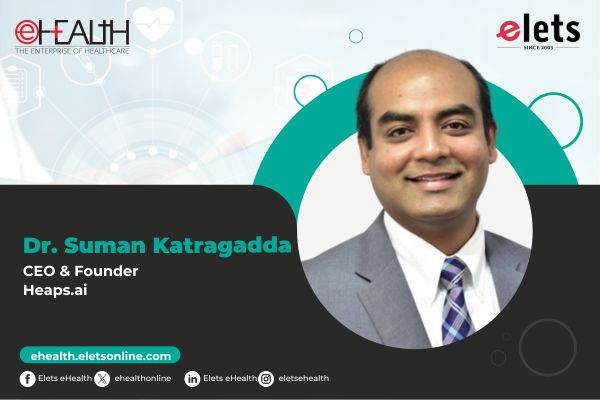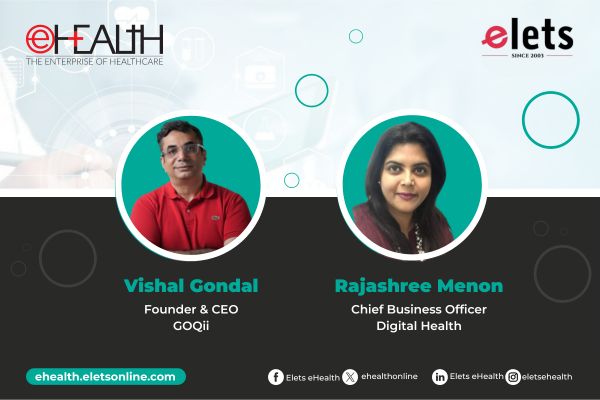
European Commission Gives a Fillip to Colon and Breast Cancer Diagnostics
The much talked about Colon and Breast Cancer Diagnostics (COBRED) project has received a whooping grant of EUR 2.9 million from the European Commission. The COBRED Project, which has been funded under the Sixth Framework Programme (FP6), endeavours to find new biomarkers for colon cancer and breast cancer. This project has the potential to herald new discoveries in cancer diagnostics.

COBRED aims at discovering colon cancer and breast cancer biomarkers for patient follow-up (monitoring markers) by exploiting the capacity of 3 state-of-the-art high-throughput technologies in an integrated systems biology approach. This project has a time span of three years. One of the goals of the project is to identify biomarker candidates (metabolites, proteins, PBL derived mRNAs) capable to detect and assess the status of minimal residual disease, metastases, and recurrence after surgery and chemotherapy. Designing a clinical protocol for prospective clinical breast cancer and colon cancer collections that fit the needs of the 3 high-throughput screening technologies used- transcriptomics, proteomics and metabolomics- is another important goal of the project.

Developing a centralized database to integrate the data generated by the 3 technology platforms with the anatomo-clinical information of the clinical collections; discovering biomarkers with better specificity and sensitivity using across-platform advanced data mining techniques on the combined data from the consolidated database; and validating the biological relevance and diagnostic potential of the identified biomarkers by testing their specificity on tissue arrays and in relevant preclinical models are some of the other goals of this project.

After three years, COBRED aims to deliver a set of biomarker/diagnostic candidates, verified in preclinical studies, ready for large-scale clinical validation and further development for commercialisation. Furthermore, COBRED will seek to demonstrate the potential of exploring data from different high-throughput technologies and clinical profiles with advanced data mining technologies for enhanced biomarker discovery. The project has nine partners. They are Biosystems International, France, Biocrates, Austria, Ipsogen, France, Institut Curie, France, Institut Gustave-Roussy, France, University of Debrecen, Hungary, University of Innsbruck, Austria, University of Tartu, Estonia and ARTTIC SA, France.

Telemedicine Can Account for Huge Savings in the UK’s Health Costs
A six-month pilot of cardiac telemedicine services within Cumbria & Lancashire of the UK has showcased the potential to save 90,000 accident and emergency(A&E) visits, 45,000 hospital admissions and hundreds of lives each year, in England. All these amounts to a great deal of savings in terms of healthcare costs. The pilot study showed how electrocardiogram (ECG) tests could be used to drastically reduce treatment times and healthcare costs for patients, afflicted with chest pains and heart problems.
The pilot’s results have also estimated that the minimum savings to the NHS from use of telemedical ECG tests are amounting to �46M per year, which can be attained simply by cutting unnecessary hospital admissions and A&E visits for symptoms of chest pain.
 The advanced cardiac telemedicine solutions from Manchester-based BroomWell Healthwatch has proved an outstanding success in the pilot. For the pilot, the NHS used BroomWell Healthwatch’s devices and call centres. Broomwell’s advanced pocket-sized ECG devices and specialised cardiac monitoring centre support GPs in making diagnoses for their patients, in minutes. BroomWell Healthwatch offered its cardiac telemedicine solutions to 15 GP practices and two NHS walk-in centres in Cumbria and Lancashire to ascertain the efficiency of ECG devices. The handheld ECG devices can scan a patient’s chest and send the report over telephone to call centres in 45 seconds flat. The report is usually returned within ten minutes.
The advanced cardiac telemedicine solutions from Manchester-based BroomWell Healthwatch has proved an outstanding success in the pilot. For the pilot, the NHS used BroomWell Healthwatch’s devices and call centres. Broomwell’s advanced pocket-sized ECG devices and specialised cardiac monitoring centre support GPs in making diagnoses for their patients, in minutes. BroomWell Healthwatch offered its cardiac telemedicine solutions to 15 GP practices and two NHS walk-in centres in Cumbria and Lancashire to ascertain the efficiency of ECG devices. The handheld ECG devices can scan a patient’s chest and send the report over telephone to call centres in 45 seconds flat. The report is usually returned within ten minutes.
Here it deserves a mention that a telemedicine ECG machine of BroomWell Healthwatch is similar to a standard ECG one, but rather than printing out the results, these machines transmit them to an external 24/7 clinical call centre. There, the results are interpreted and sent back over email or fax.
Data from the pilot showed 82 percent of patients receiving ECGs did not need to go to hospital (neither A&E nor outpatients) following the test�giving rapid reassurance, and reducing stress and anxiety.
The results of the pilot showed that access to ECG tests through this technology can save hundreds of lives each year by early detection of cardiac ailments. Such early detection can facilitate in avoiding an irreversible heart damage.
A further benefit is that patients can be accurately diagnosed within local healthcare settings instead of having to travel to a hospital for testing, thereby saving the patients’ money and effort. BroomWell Healthwatch believes the savings to the NHS from using telemedicine ECGs on a wider scale would be around �250M per year. This includes cutting down outpatient appoint-ments and waiting times, as GPs would not need to refer their patients for an ECG.
The same telemedicine equipment can also be used to monitor a range of other conditions including arrhythmia, heart failure, congestive heart disease, and COPD. An uation of these is now underway.
Robots to Rescue in Future Wars
The U.S. researchers are in the process of developing a remote-controlled robot, which is designed to rescue injured or abducted soldiers, without opening a room for risk to their comrades’ lives or limbs. The prototype of the nearly 6-foot-tall, two-legged Battlefield Extraction-Assist Robot, very aptly called Bear, does pack in lots of raw power, along with a friendly appearance. This futuristic robot could lift nearly 135kgs with one arm. It is being developed by Vecna Technologies of College Park, Md. Bear is expected to be ready for field testing within five years.
The upcoming robot will be able to climb over rough terrain or scale up and down the stairs with a wounded soldier in its arm, while in a crouching or kneeling position. The robot is going to have wheels on its hips, feet and knees which will allow it to travel over smooth surfaces, while adopting a number of positions. There is more to this friendly robot. It will also be able to load trucks and carry equipments, functions which can carry immense utility in war zones.
Siemens’ Prototype of Simultaneous Imaging System arrives
Recently Siemens Medical Solutions showed results of a prototype for the world’s first fully-functioning imaging system, capable of performing simultaneously Magnetic Resonance Imaging (MRI) and Positron Emission Tomography (PET). This innovative imaging system could herald a giant leap in the diagnosis and therapy for millions of patients, suffering from neurological diseases, stroke and cancer. The first in-vivo human brain simultaneous MR-PET images were acquired in the Siemens facilities in USA. Testing of this new prototype MR-PET will start before the end of 2007.
The first MR-PET images were acquired with support of Dr. David Townsend and Dr. Claude Nahmias, both from the University of Tennessee, USA, and Dr. Heinz-Peter Schlemmer, Dr. Claus Claussen and Dr. Bernd Pichler, all from the University T�bingen in Germany. MR-PET has the potential to become the imaging modality of choice for neurological studies, certain forms of cancer, stroke, and the emerging study of stem cell therapy.
Researchers expect that MR-PET images will open new doors in understanding the pathologies and progression of various neurological disorders like Alzheimer’s, Parkinson’s, epilepsy, depression and schizophrenia. For example, PET can currently differentiate mild cognitive impairment from early-stage Alzheimer’s, but cannot determine reduced brain volume caused by atrophy. By combining MR and PET, clinicians may be able to make a more sound determination of both cognitive impairment and atrophy. Furthermore, combining MR-PET and the new emerging neurological biomarkers, has the great potential to strengthen the assessment of the condition.
Similarly, in stroke patients, the technology holds the promise of allowing physicians to study which brain tissues might be salvageable after a stroke. In other rehabilitation settings, such as for patients with traumatic brain injury, the Siemens MR-PET approach would improve care and workflow. In that case, patients would be only scanned once instead of having to go to two different locations and get two subsequent scans. MR-PET images also hold great promise for stem cell therapy. Because the Siemens MR-PET approach allows simultaneous measurement of anatomy, functionality and biochemistry of the body’s tissues and cells, it may enable researchers to correlate MR and PET data in a way not previously possible before. This correlative approach will enable to get a much deeper understanding of track stem cell migration to damaged parts of the brain, determination over a prolonged period whether or not cells are still alive, and identification of how stem cells have been integrated into the body’s neurological network.
Detecting Esophagus’ Reflux Through Wireless Monitoring
 The doctors of the University of Texas Southwestern Medical Center and the engineers of University of Texas Arlington, have developed a wireless monitoring system. This wireless monitoring system uses electrical impulses to track esophageal reflux. Researchers have combined the Radio Frequency Identification (RFID) technology with another emerging applied science, namely impedance monitoring, which tracks reflux through electrical impulses, to arrive at this system.
The doctors of the University of Texas Southwestern Medical Center and the engineers of University of Texas Arlington, have developed a wireless monitoring system. This wireless monitoring system uses electrical impulses to track esophageal reflux. Researchers have combined the Radio Frequency Identification (RFID) technology with another emerging applied science, namely impedance monitoring, which tracks reflux through electrical impulses, to arrive at this system.
The new system works by attaching a small, flexible RFID chip to the esophagus, and the chip remains there in that position, until it is removed by a physician.
The size of the chip is around two square centimeters, which tests electrical impulses that signal acidic or nonacidic liquids moving through the esophagus. Thereafter its function is to transmit data to a wireless sensor, worn around the neck.
According to the researchers, as a result of a special plastic material used, the patients would hardly feel anything in their throat when the device is inserted. However, this innovative device is still in the testing phase.
The researchers believe that this new device will herald an improvement over the current standard procedures, which require placing a flexible catheter tube through the nose and down into the esophagus.
The new wireless system does not require the catheter, so doctors are hopeful that the system will easily allow normal eating, drinking and activity patterns. The system includes the PillCam�a small pill-sized wireless camera�which clicks photos as it passes through the digestive tract, and Bravo capsule, another wireless system that detects esophageal acids.
The sensor is tailored to detect the stomach acid, gas and water, so that doctors can determine whether the presence of those substances coincides with feelings of heartburn, the start of eating or other physiological activities.
Asian forays in health to reap development dividends
There are some welcome news in the health sector from the Asian front, which ranged from the underdeveloped Afghanistan, to the almost developed Malaysia. Recently on 20 June 2007, the first telemedicine system in Afghanistan was introduced; in its capital Kabul. The telemedicine system was being formally launched by the Afghan Minister for Communications, Amirzai Sangin. The system is supported by Roshan�the leading cellphone operator of Afghanistan�and this development is expected to provide hospitals in Afghanistan with real-time access to specialist healthcare.
In the first phase, the telemedicine network would link the Kabul-based French Medical Institute for Children (FMIC) to Aga Khan University Hospital in Karachi, Pakistan. Subsequent phases will link Afghanistan’s major regional hospitals to the FMIC, which will in turn be connected with some medical institutions in Europe and North America. This will help Afghanistan patients access to world class healthcare in the near future.
In a completely unrelated development, the UN Refugee Agency (UNHCR), the Malaysian Medical Relief Society (MERCY Malaysia) and the Embassy of the Czech Republic have together signed an agreement, which entails initiating a nine-month long Mobile Healthcare Clinic Project for the refugees in Malaysia. This project endeavours to bring healthcare services to refugees in Malaysia, who are unable to make the journey to various clinics due to a number of factors.
MERCY Malaysia will implement the project, while the Czech Embassy will provide the funds for this project. UNHCR and the Czech Embassy will be jointly monitoring the project.
A Patient-Friendly Vision of PHR
VisionTree, the leader in web-based patient-centered health record management and provider communication systems, has announced that its VisionTree Optimal Care� (VTOC) is now reaching 100,000 patients in more than 40 sites.
The web-based system effectively standardizes personal health record documentation by applying the electronic clipboard at every point a patient needs to complete a form. Physician’s unique registration and history forms are administered through VTOC and personal health record fields are populated and tagged, giving healthcare consumers and physicians access to vital data when they need it. This has improved patient/provider communications, staff workflow efficiency and safety practices.
VTOC is a proven and secure patient health management system for collecting and storing medical and personal health records, as well as consents, reminders, messaging, education material and outcomes data. This enterprise-based system has been adopted by numerous specialties, as well as for the self management of chronic diseases including hypertension and diabetes. The system empowers healthcare consumers to decide who will have access to their personal health record history, test results and other documentation.
VTOC has presence in 48 leading academic and community sites around the US which include UCLA Medical Center, Henry Ford Hospital, Partners Telemedicine, Scripps Green Hospital and Carolinas Medical Center. More than 200 new users on an average sign up for VTOC services through their provider each week.
“VTOC is a win-win for both healthcare consumers and their providers,” said Larry Khoo, M.D., Director of UCLA Medical Center’s Spine Institute.
LSU Healthcare Network enters the world of EHR
Louisiana State University has selected Medem’s iHealth to generate free health records for patients, who are included in its healthcare network. iHealth is a patients’ personal e-Health record. It is a web-based system, which carries the patients’ entire medical history. The system has the provision where each patient can update his/her medical records. Patients can go to the web and obtain their personal health records. LSU Healthcare Network also provides medical evacuation card to each patient who enters the system. The card enables patients to get medically prepared in case they have to evacuate their city. The medical evacuation card also has the patient’s iHealth record username and login and contains the contact information for the patient’s primary provider.
However, iHealth is not the only EHR initiative of LSU Healthcare Network. LSU has also purchased Allscripts’� e-health record system, which is a full-service, top-shelf electronic health record. Allscripts’ system offers the advantages of an e-prescription, or e-RX; a module that is free to the public.
According to Dr. Frank Opelka, CEO of the LSU Healthcare Network and Associate Dean for Clinical Affairs at LSU Health Sciences Center School of Medicine at New Orleans, LSU is also partnering with Medem in a Centers for Medicare & Medicaid (CMS)-sponsored pilot project, for providing Medicare patients with electronic health records. CMS has asked contractors such as Medem to develop pilot sites, which would register at least 100,000 patients.
New South Wales Welcomes its New e-Health Records System
For the last four years, New South Wales(NSW) Health has been developing an online medical records system, which is termed as Healthelink. Healthelink brings together summaries of health information for individuals from different doctors, hospitals and health clinics and puts it into one secure computer record.
 This much-touted online medical records system is aimed at providing a central point of reference for the Australian state’s health professionals for accessing patient information and eliminating fragmented health records. NSW Health is presently testing Healthelink in parts of the state. The pilot is progressing well, with more than 9500 people using this application. Over the last five years, Healthelink has received more than 15.54 million USD through funding. The concept has been well received in New South Wales, as the opt out rate among people is less than five percent.
This much-touted online medical records system is aimed at providing a central point of reference for the Australian state’s health professionals for accessing patient information and eliminating fragmented health records. NSW Health is presently testing Healthelink in parts of the state. The pilot is progressing well, with more than 9500 people using this application. Over the last five years, Healthelink has received more than 15.54 million USD through funding. The concept has been well received in New South Wales, as the opt out rate among people is less than five percent.
Every individual’s electronic health record is empty when they are first enrolled in Healthelink. Information is added to it over time, but no historical data is loaded except for community healthcare where related episodes to current care are also included. As this is a pilot, not all facilities are taking part. The system will progressively expand within the pilot areas to include more healthcare facilities and doctors.
Chunghwa Telecom’s Successful Foray into Taiwan’s Mobile Medical Care
 Taiwan-based integrated telecommunications operator named Chunghwa Telecom is launching ‘Taiwan Mobile Healthcare Services’. To be launched at the Taipei Medical University Hospital, Tri-Service General Hospital and Taipei City-Wan Fang Hospital, this mobile healthcare service is part of the M-Taiwan initiative, which is being piloted by Taiwan’s Ministry of Economic Affairs (MoEA). The launch of this mobile healthcare services will greatly facilitate healthcare by enabling mobile medical care, using a Nortel WiMAX solution. This is the first time that a WiMAX healthcare network will be introduced in Taiwan.
Taiwan-based integrated telecommunications operator named Chunghwa Telecom is launching ‘Taiwan Mobile Healthcare Services’. To be launched at the Taipei Medical University Hospital, Tri-Service General Hospital and Taipei City-Wan Fang Hospital, this mobile healthcare service is part of the M-Taiwan initiative, which is being piloted by Taiwan’s Ministry of Economic Affairs (MoEA). The launch of this mobile healthcare services will greatly facilitate healthcare by enabling mobile medical care, using a Nortel WiMAX solution. This is the first time that a WiMAX healthcare network will be introduced in Taiwan.
The network will support emergency medical assistance and patient care services, outside the premises of a medical facility, as and when and wherever it is required.
Through WIMAX technology, which entails super-fast connectivity and high bandwidth, the health personnel can connect to critical medical resources.
Taiwan government is laying stress on fostering mobile access throughout the country and this will greatly transform Taiwan’s healthcare scenario for the better. Later on the government will launch mobile access services for finance, insurance, security, delivery, distribution and other related medical services.
Be a part of Elets Collaborative Initiatives. Join Us for Upcoming Events and explore business opportunities. Like us on Facebook , connect with us on LinkedIn and follow us on Twitter , Instagram.
"Exciting news! Elets technomedia is now on WhatsApp Channels Subscribe today by clicking the link and stay updated with the latest insights!" Click here!
















